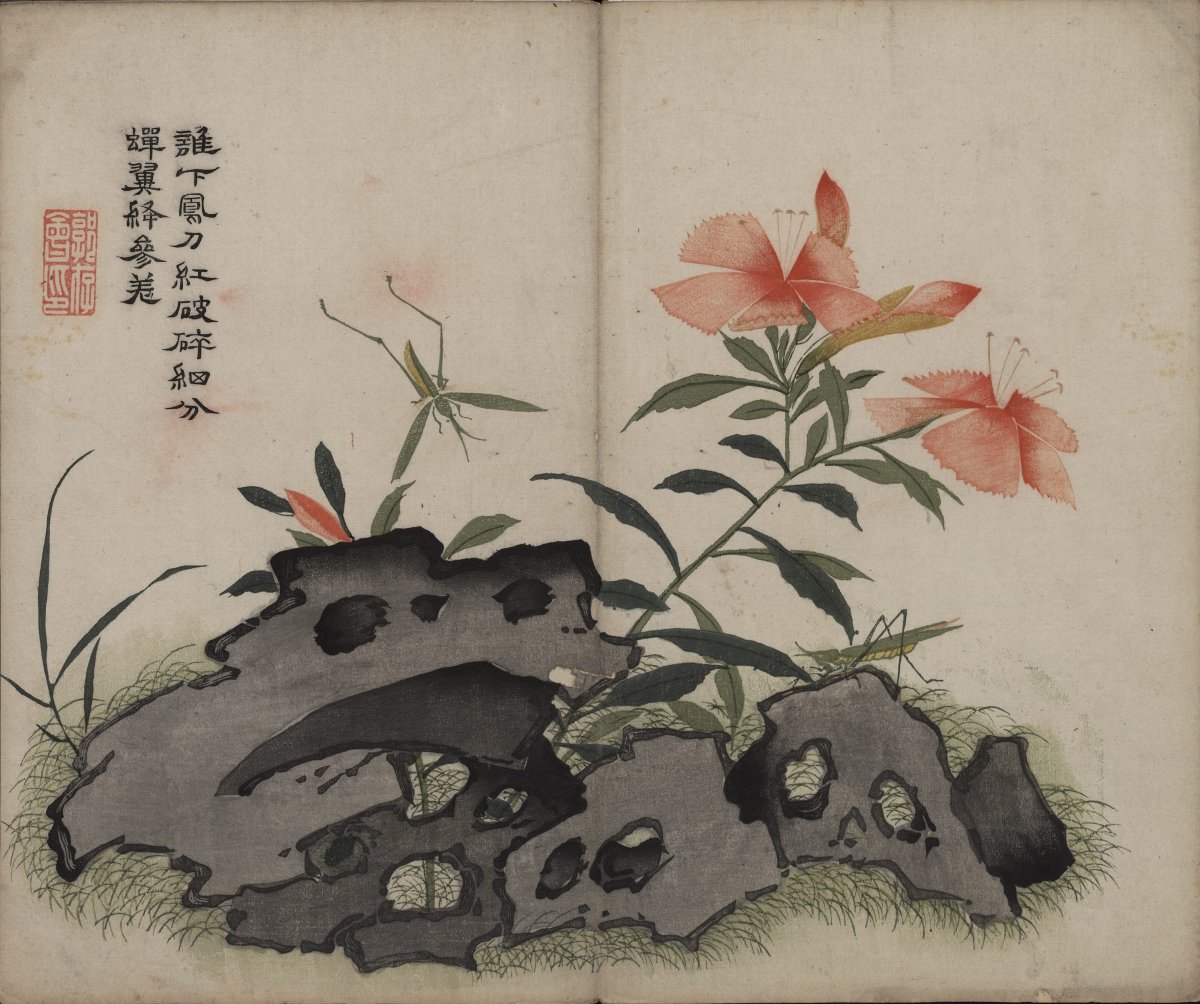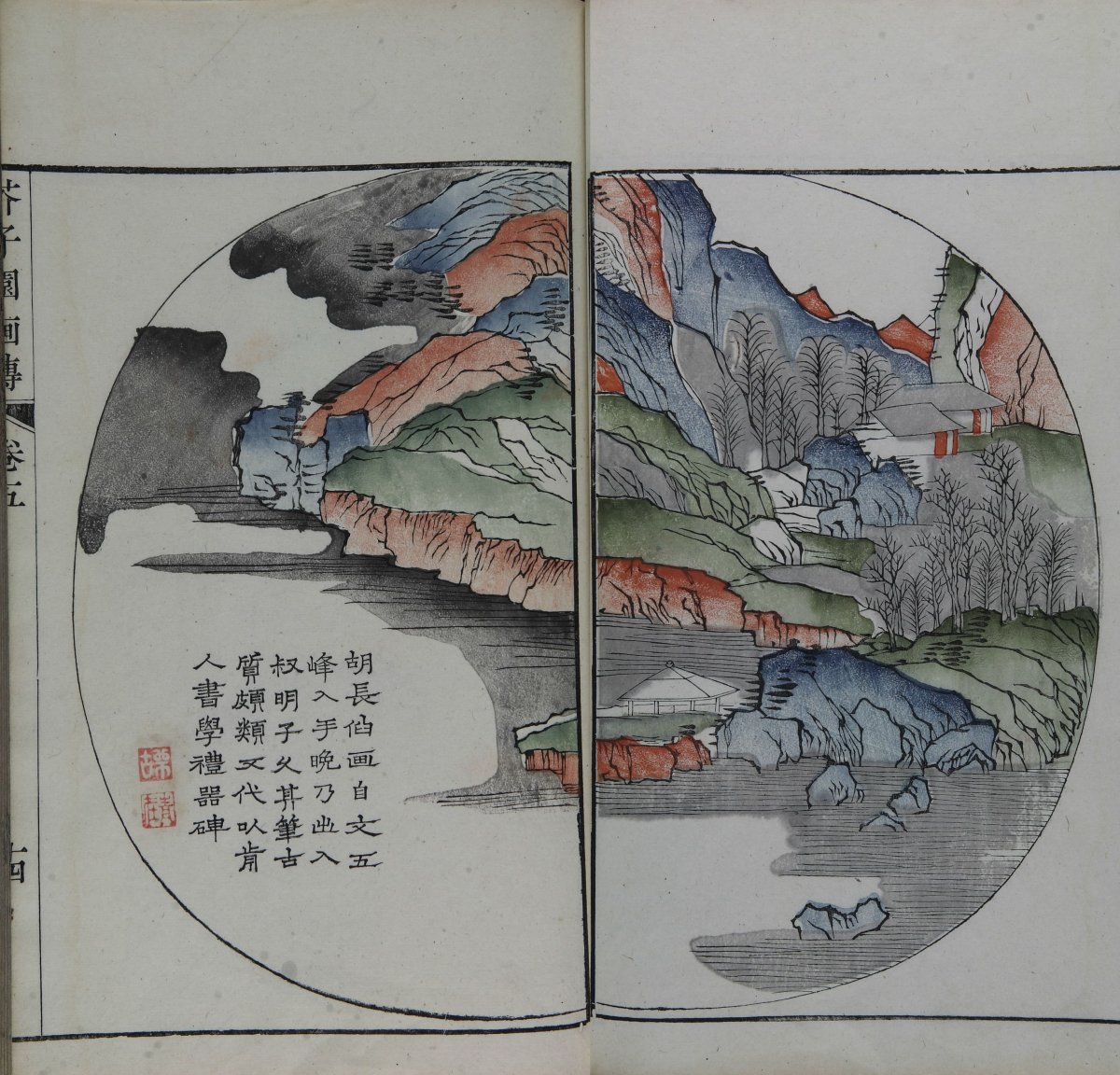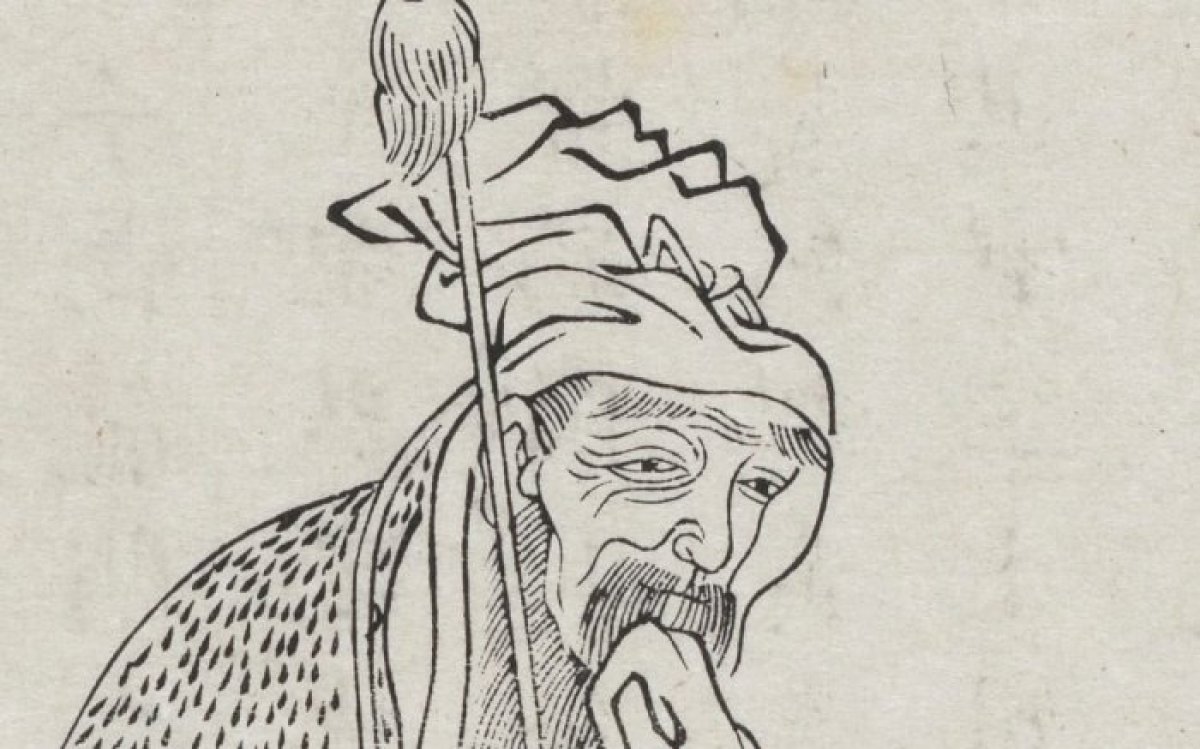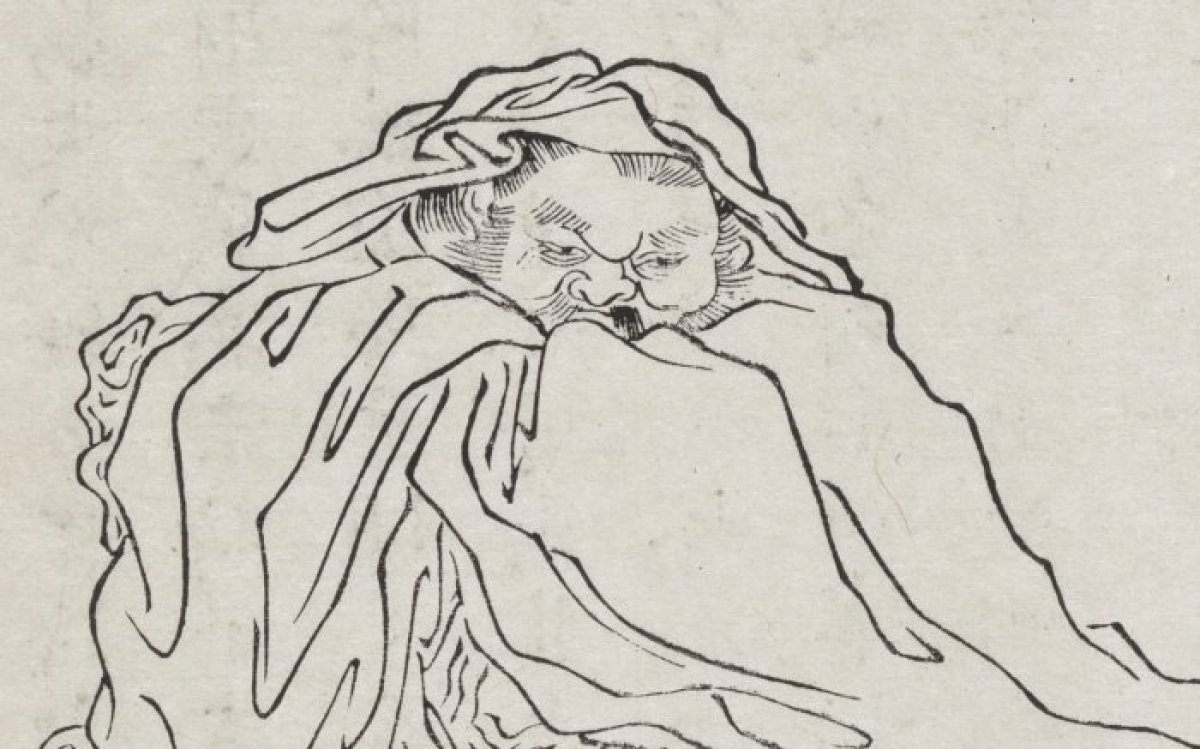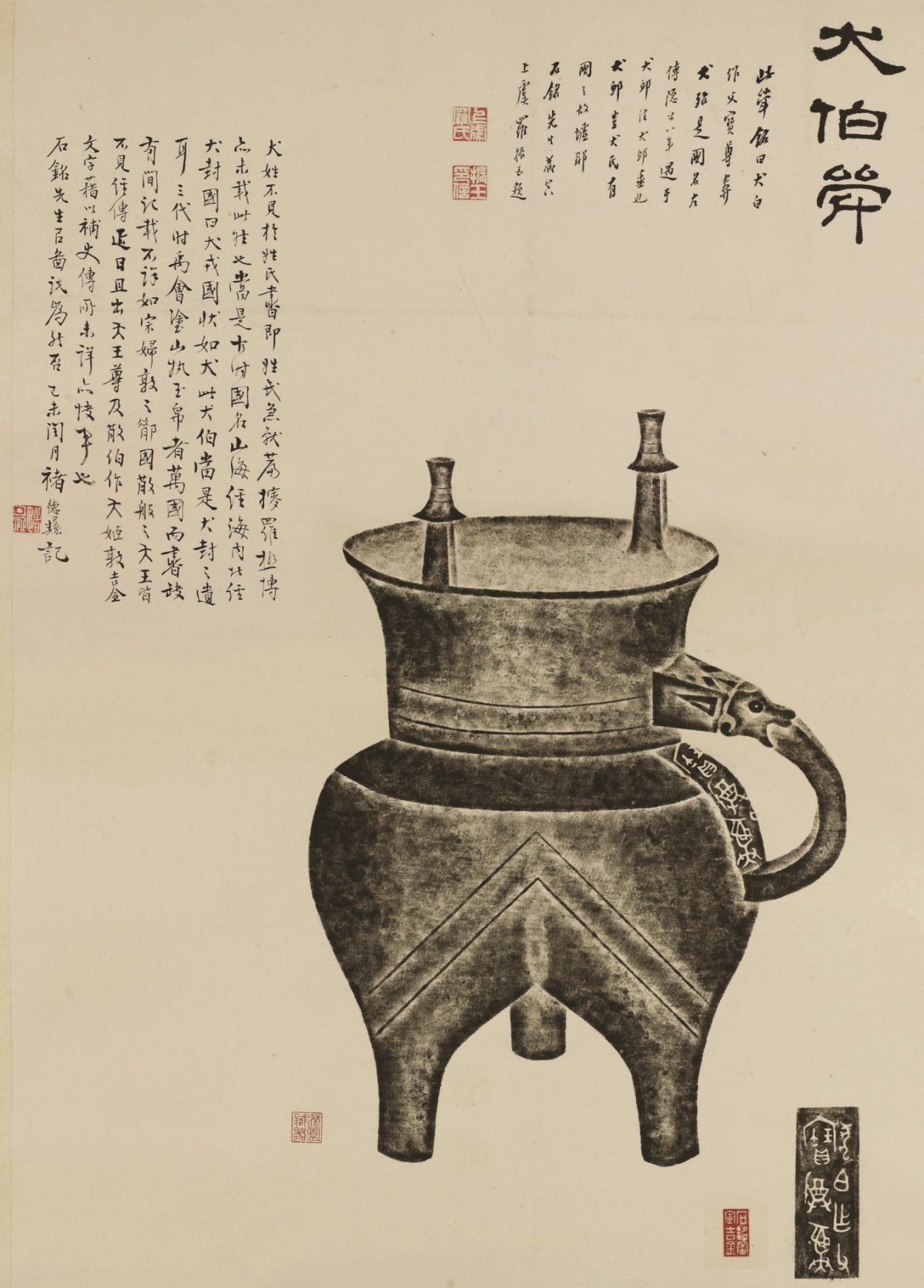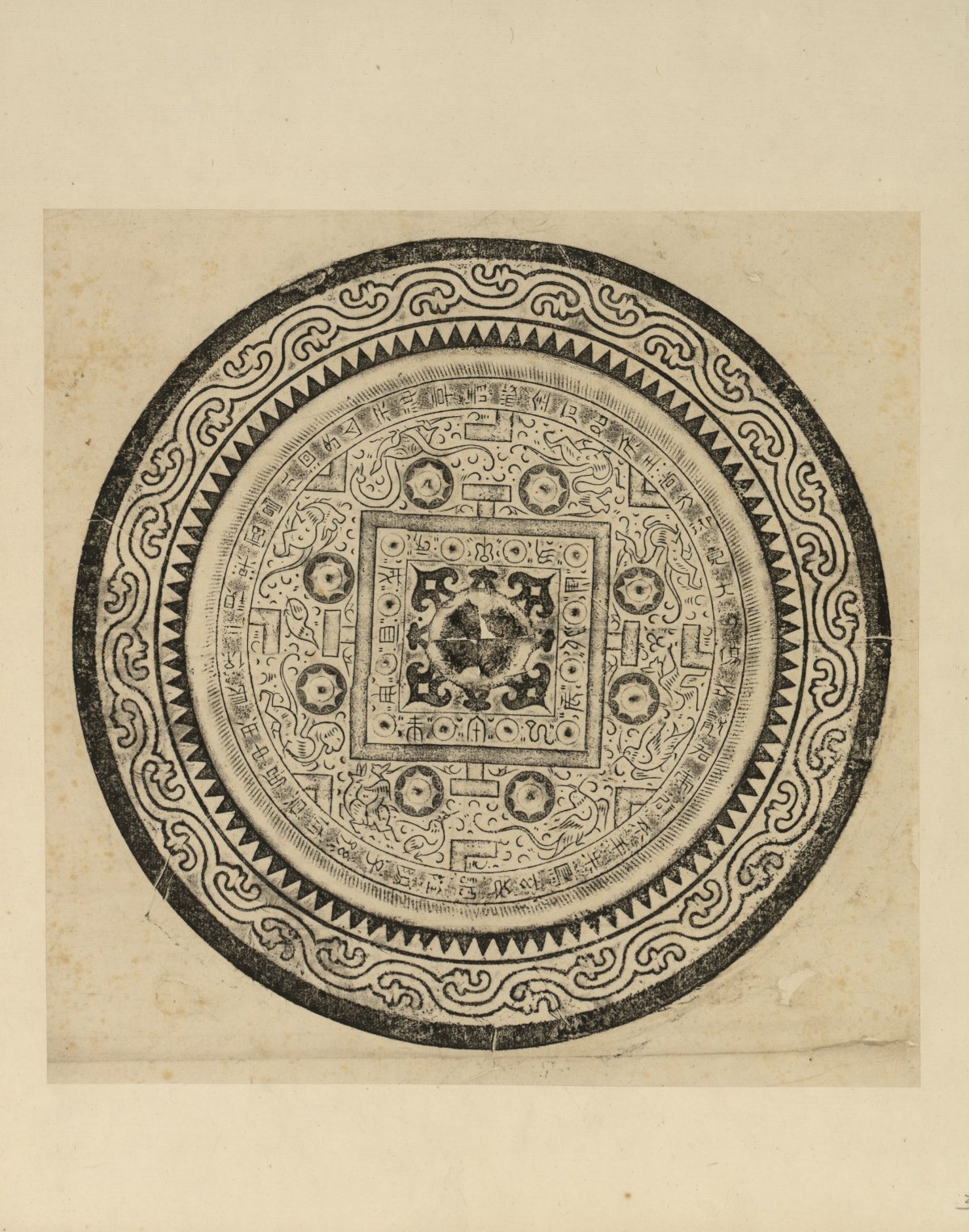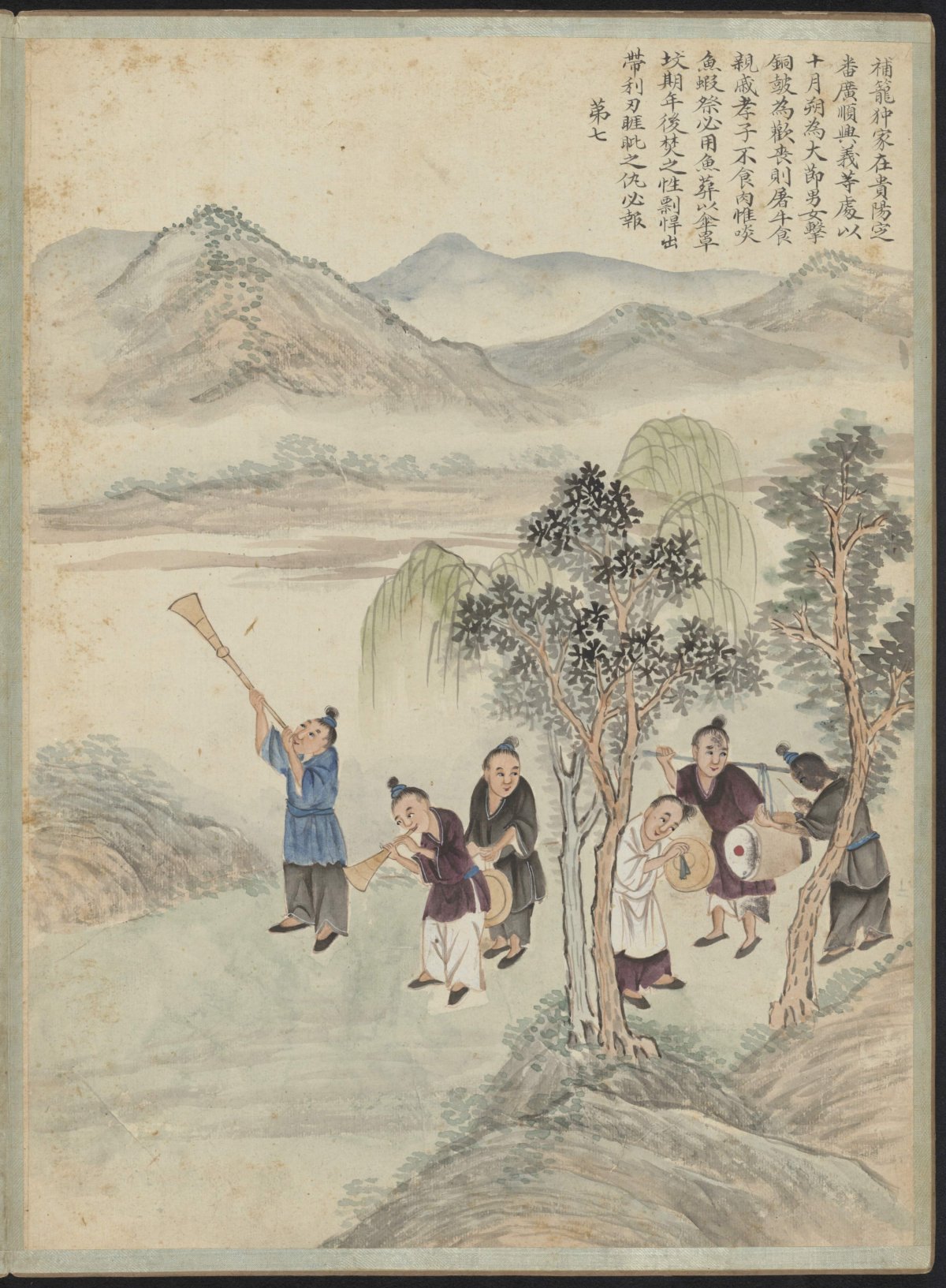Emperor Shunzhi, the first emperor of the Qing dynasty (since the taking of China proper in 1644) died in 1661. His son, Kangxi, took over at the age of seven and reigned for 61 years. He encouraged painting, porcelain making and literature.
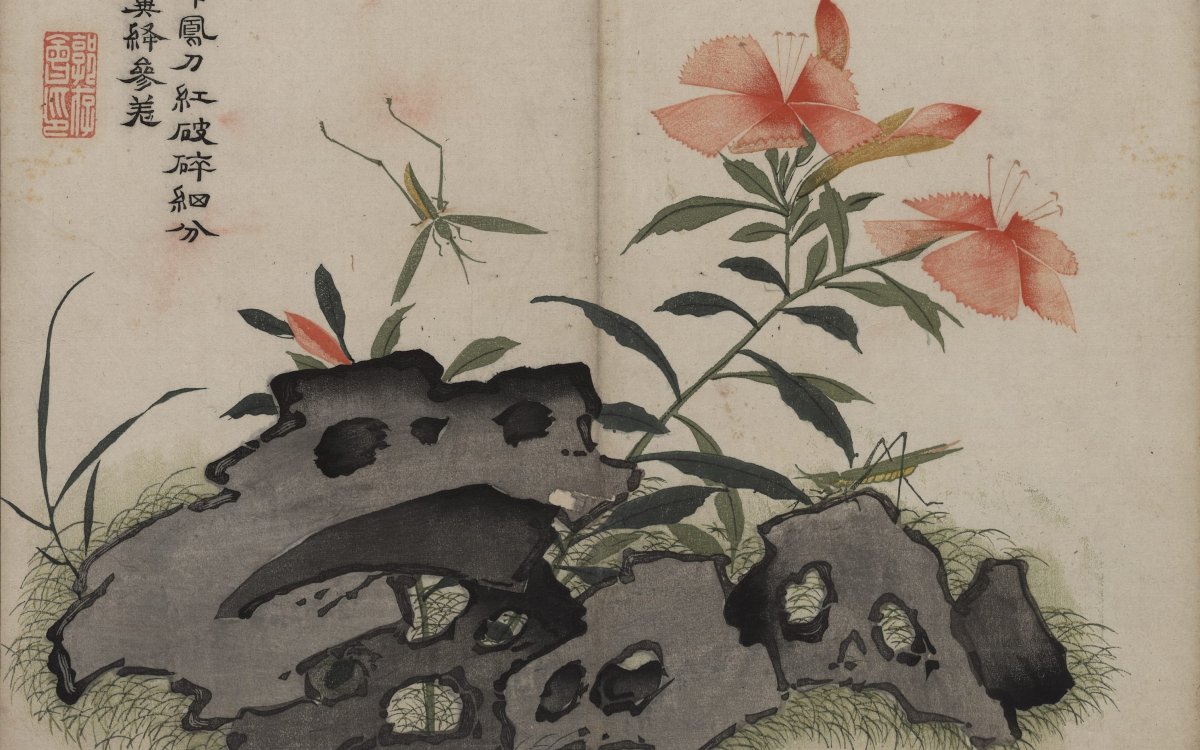
Wang Gai (1645–1707) et al. Painting Manual of the Mustard Seed Garden, Nanjing 1679, National Library of China
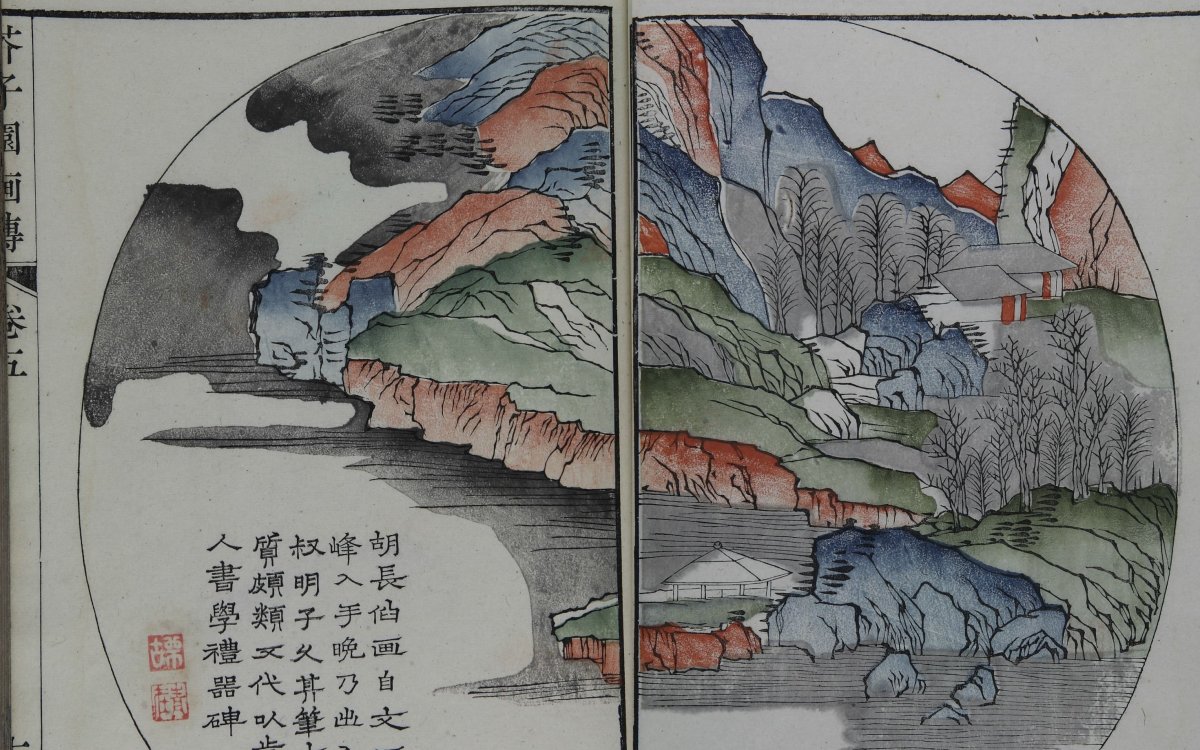
Wang Gai (1645–1707) et al. Painting Manual of the Mustard Seed Garden, Nanjing 1679, National Library of China
Painting was viewed as a respectable pursuit, and so manuals on the subject became popular in the late Ming dynasty. Some used multi-coloured printing with different wood blocks for each colour. This interest continued into the early decades of the Qing dynasty with the printing of Painting Manual of the Mustard Seed Garden. Covering the general principles of landscape painting and the preparation of colours, it became one of the most renowned works on painting in East Asia.
The first part, by Wang Gai and printed in five colours in 1678, deals with the painting of trees, hill and stones, people and buildings, followed by examples by renowned masters. Two other parts, by Wang and his two brothers and printed in 1701, dealt with the painting of plants, flowers, birds and insects.
Painting was viewed as a respectable pursuit, and so manuals on the subject became popular in the late Ming dynasty. Some used multi-coloured printing with different wood blocks for each colour. This interest continued into the early decades of the Qing dynasty with the printing of Painting Manual of the Mustard Seed Garden. Covering the general principles of landscape painting and the preparation of colours, it became one of the most renowned works on painting in East Asia.
The first part, by Wang Gai and printed in five colours in 1678, deals with the painting of trees, hill and stones, people and buildings, followed by examples by renowned masters. Two other parts, by Wang and his two brothers and printed in 1701, dealt with the painting of plants, flowers, birds and insects.
Although it was later reproduced using a variety of methods, the first editions of Painting Manual of the Mustard Seed Garden printed in the late seventeenth and early eighteenth century editions are important examples of colour woodblock printing. The process of woodblock printing had its origins in Asia, with the earliest surviving examples dating from the Han dynasty (206 BC – 220 AC).
Many renowned Chinese painters began drawing lessons with the Mustard Seed Garden, as did many Japanese artists of the Edo period.
1. Have students compare and contrast both the painting and woodblock printing styles in Qing China and Edo Japan (1603-1868). They should present their findings visually, with examples, using a Prezi, PowerPoint presentation or similar.
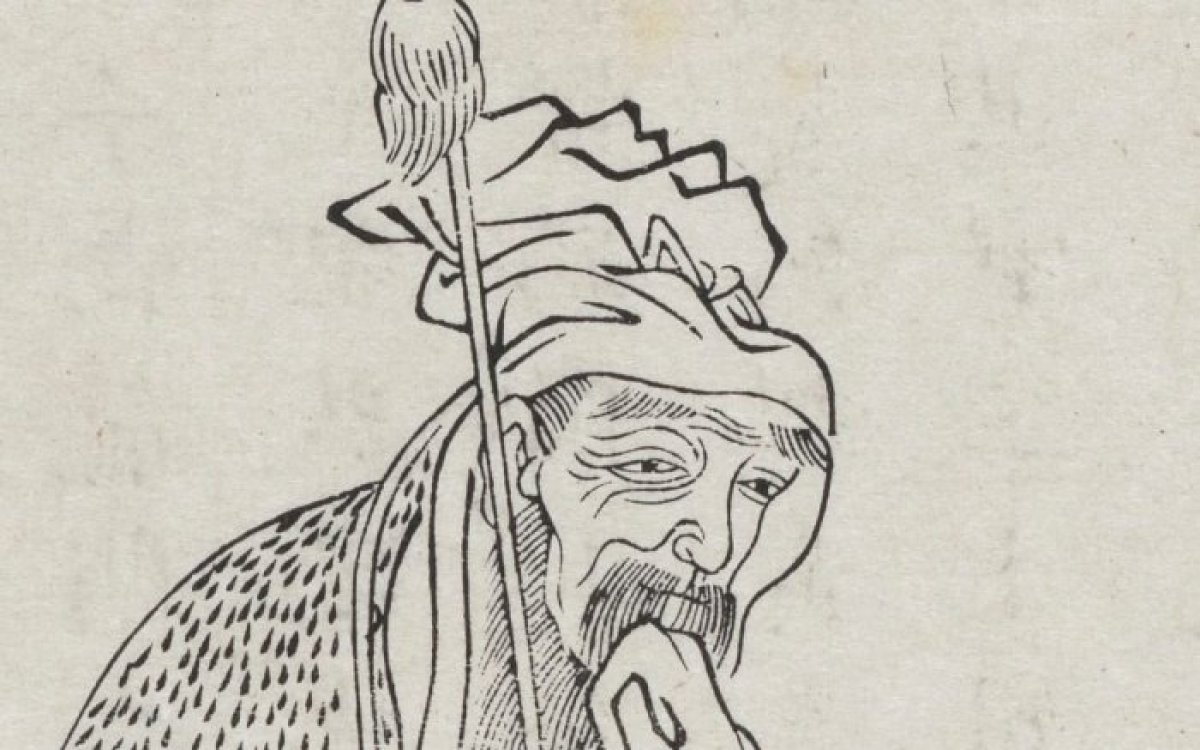
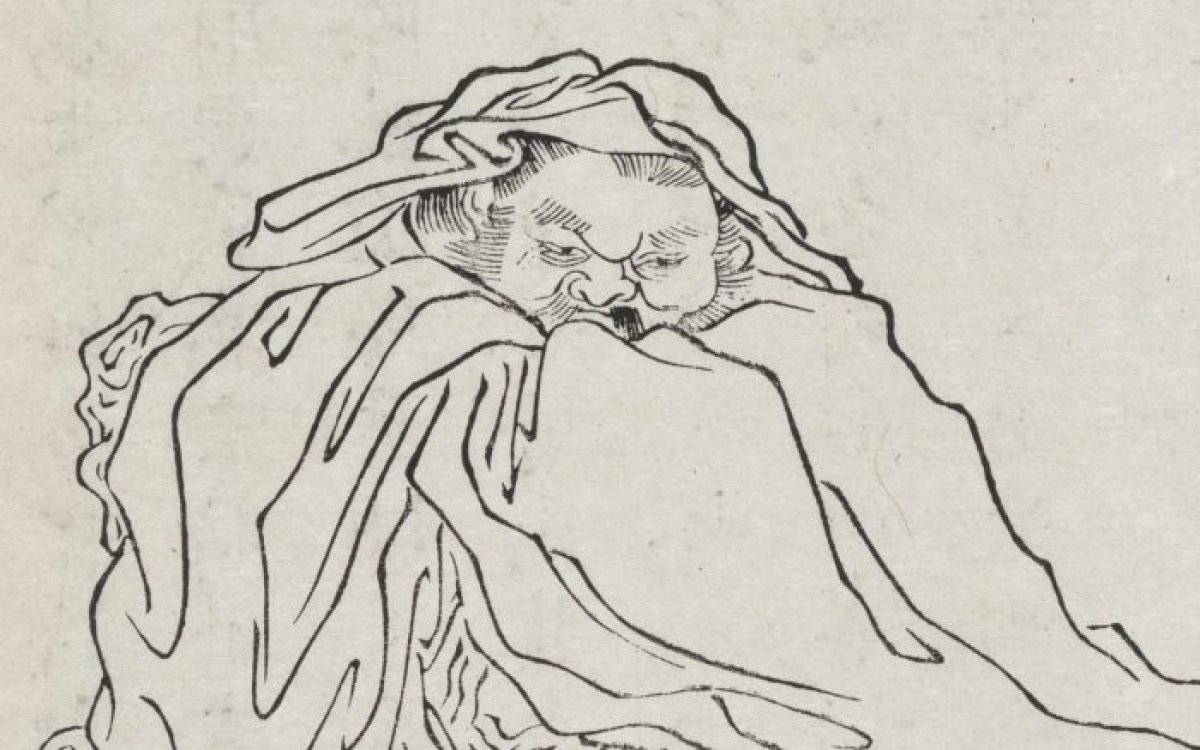
Portraits from the Hall of Late Blossoming contains 120 illustrations of men and women from Chinese history by artist Shanguan Zhou (1665-1749). While few details of his life are known, paintings attributed to him can be found in galleries the world over.
Each of the images in this volume are accompanied by a short biography. The work has been reproduced on numerous occasions since its debut.
The first image reproduced here shows Su Wu of the Han dynasty, an imperial envoy later exiled as a goat herder. The second image is of Meng Haoran, a poet active during the Tang dynasty.
Portraits from the Hall of Late Blossoming contains 120 illustrations of men and women from Chinese history by artist Shanguan Zhou (1665-1749). While few details of his life are known, paintings attributed to him can be found in galleries the world over.
Each of the images in this volume are accompanied by a short biography. The work has been reproduced on numerous occasions since its debut.
The first image reproduced here shows Su Wu of the Han dynasty, an imperial envoy later exiled as a goat herder. The second image is of Meng Haoran, a poet active during the Tang dynasty.
In the preface to Portraits from the Hall of Late Blossoming Shanguan Zhou writes about his process of choosing the 120 important figures for his book:
These 120 do not account for all the ancients. Many more captured my imagination, but I have simply taken a few examples from among thousands to satisfy my personal preferences. Viewing them together, in addition to the meritorious ministers of the Ming, I find that I have included personages from the dynasties of the Han to the Ming; among them are princes, marquises, generals and ministers; the loyal, the filial, the conscientious and the righteous; poets, writers, calligraphers and painters; Daoists and Buddhists. I even find members of the fairer sex. It is just like gathering them all in a single hall and listening to their chatter.
1. Ask students to investigate Confucius and his influence during the Qing Dynasty.
What was the relationship between the Qing Dynasty and previous eras of Chinese history? How did Confucian thought inform this connection especially in relation to antiquity?
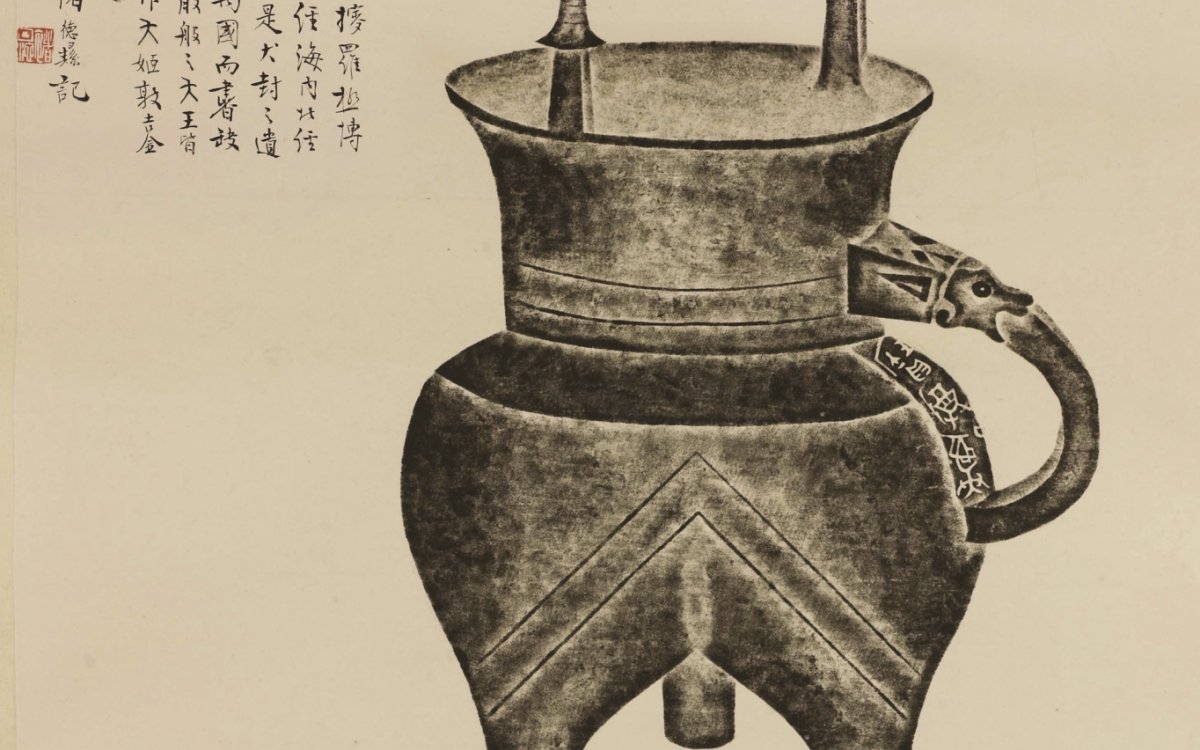
Rubbing from bronze wine vessel of the Earl of Quan, late 19th–early 20th century, National Library of China
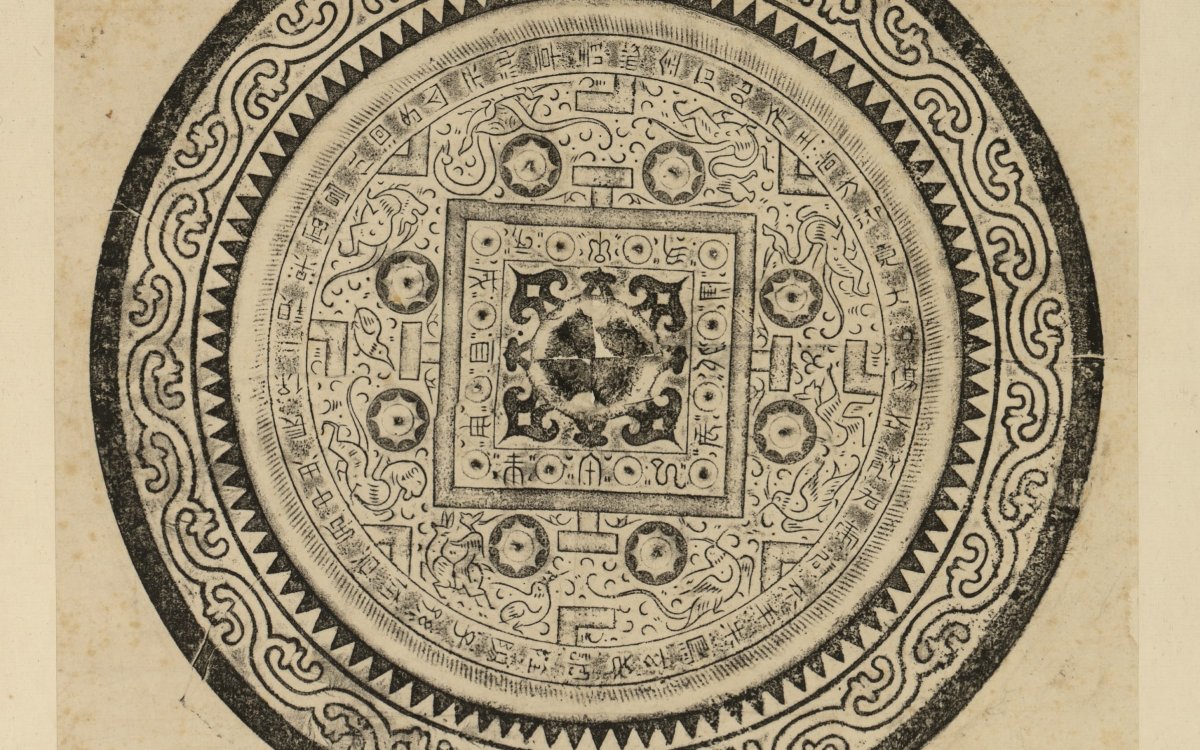
Rubbings of Bronze Mirrors, late 19th century, National Library of China
During the Qing the meaning of the country’s cultural inheritance was reconsidered by scholars who sought to look beyond the interpretations of past generations and to re-interrogate the original texts. This interest in material evidence of the past led scholars to words preserved in stone and even bronze.
Bronze vessels and mirrors from various periods in the past survived into the Qing era, and often have inscriptions recorded on their inner surfaces and backs respectively. These inscriptions often recorded the reason for their production: perhaps to celebrate success or to reward good service.
In a culture that valued the written word so highly, these inscriptions formed a direct link with the past.
These objects were traditionally large, heavy and not easily shared. However, their craftsmanship could be appreciated through rubbings taken from their surfaces. Rather than merely producing impressions of a flat surface, the rubbings preserved both the texture and the form of the original object. Since the inscriptions were worthy of individual study, it was important that they could be reproduced separately for inspection at one’s leisure. When mounted on paper or silk, a scholar or collector could also attach his own comments on the significance of the piece.
During the Qing the meaning of the country’s cultural inheritance was reconsidered by scholars who sought to look beyond the interpretations of past generations and to re-interrogate the original texts. This interest in material evidence of the past led scholars to words preserved in stone and even bronze.
Bronze vessels and mirrors from various periods in the past survived into the Qing era, and often have inscriptions recorded on their inner surfaces and backs respectively. These inscriptions often recorded the reason for their production: perhaps to celebrate success or to reward good service.
In a culture that valued the written word so highly, these inscriptions formed a direct link with the past.
These objects were traditionally large, heavy and not easily shared. However, their craftsmanship could be appreciated through rubbings taken from their surfaces. Rather than merely producing impressions of a flat surface, the rubbings preserved both the texture and the form of the original object. Since the inscriptions were worthy of individual study, it was important that they could be reproduced separately for inspection at one’s leisure. When mounted on paper or silk, a scholar or collector could also attach his own comments on the significance of the piece.
Since large stones and other items containing inscriptions generally could not be easily souvenired, the alternative was to take a rubbing. There was also belief over time that it was more accurate to ‘rub’ a text than to copy it. For quality work a skilled artisan was required.
During the late Qing era a new technique of composite rubbing emerged. This technique gives the finished product a three-dimensional quality, reproducing the image of an object on two-dimensional paper while trying to maintain as many of the object’s three-dimensional characteristics as possible.
A composite rubbing requires many measurements, numerous stencils and up to 200 shifts of rubbing paper for a vessel with many parts and complex designs. Skill is needed for the sequence in stencilling and rubbing the vessel and its component parts; for the manipulation of the rubbing paper and application of ink to simulate depth and overcome the problems of foreshortening; and to faithfully render curving or receding portions of the vessel. This is a highly creative process and different artists can produce different rubbings of the same vessel.
1. Devise an activity to explore the difficulty of composite rubbings with your students. Have them choose a three-dimensional object and reproduce it on paper using crayon and experimenting with different rubbing techniques.
Discuss the idea of accuracy contained in the process of taking rubbings, and some modern versions of the practice including for family history (gravestone rubbings) and in archaeology.
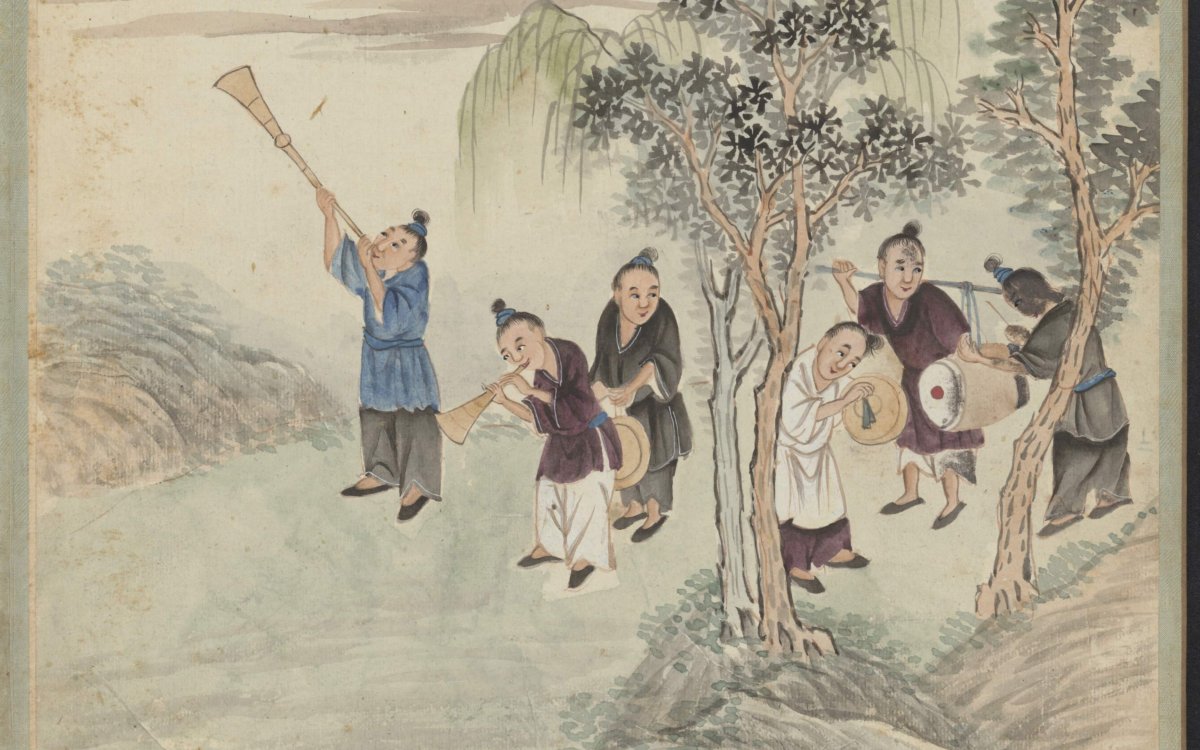
(1850). [Zhongguo Xi nan di qu shao shu min zu sheng huo xi su hua ce] [Paintings of life and customs of the minorities in the Southwest China]. http://nla.gov.au/nla.obj-76789707
The border regions around Yunnan, Sichuan and Guizhou were home to a variety of peoples that had long resisted central control. Qing administrators adopted the proven strategies of their forebears, ranging from alliance to suppression. Yet, here as elsewhere, the Qing court initially adopted a positive attitude and tried to learn more about their subjects.
One of the Products of this engagement was the so-called ‘Miao Album’, a collection of illustrations that introduced the customs of ethnic groups in these boarder regions.
These albums were originally created based on material produced for administrative purposes in the early decades of Qing rule, but as time went on were increasingly aimed at the popular market. In the nineteenth century they were readily available in Beijing and Shanghai.
The border regions around Yunnan, Sichuan and Guizhou were home to a variety of peoples that had long resisted central control. Qing administrators adopted the proven strategies of their forebears, ranging from alliance to suppression. Yet, here as elsewhere, the Qing court initially adopted a positive attitude and tried to learn more about their subjects.
One of the Products of this engagement was the so-called ‘Miao Album’, a collection of illustrations that introduced the customs of ethnic groups in these boarder regions.
These albums were originally created based on material produced for administrative purposes in the early decades of Qing rule, but as time went on were increasingly aimed at the popular market. In the nineteenth century they were readily available in Beijing and Shanghai.
The rich illustrations in Miao Albums provide a great amount of detail about the characteristics and customs of minority ethnic groups during the Qing dynasty.
1. Use this image as stimulus for a discussion on the veracity of paintings as historical sources. What are some of the potential shortcomings inherent in the form?
Do you think these scenes might have been posed or influenced in other ways by the subjects? Consider the image from the perspective of its subjects, authors, and audiences.
